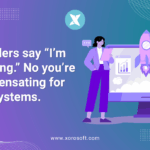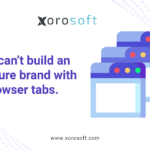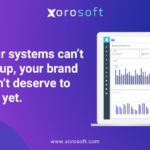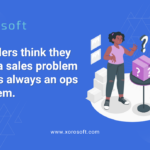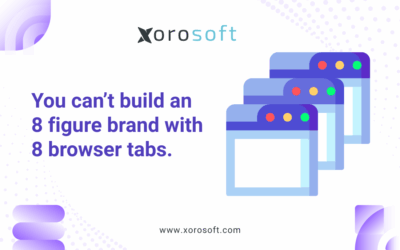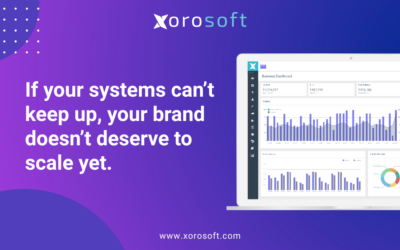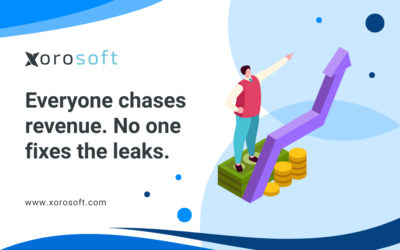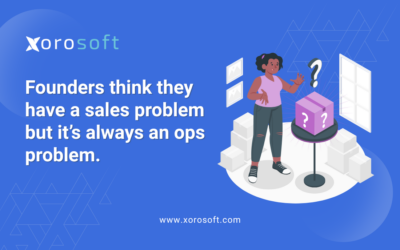
The Real Challenge Behind Scaling a Brand
Every founder dreams of building a scalable brand—one that grows smoothly, where creativity drives progress and systems quietly handle the details.
You picture mornings spent designing campaigns or building partnerships, not fixing inventory mismatches or tracking delayed orders. Instead, time often slips away to tasks that software should handle automatically. As a result, what should feel exciting can start to feel exhausting.
Ultimately, the difference between a good brand and a scalable brand isn’t funding or marketing power. Rather, it’s operational clarity. When your systems talk to each other, growth stops feeling chaotic and therefore starts feeling sustainable.
Why a Scalable Brand Feels Harder to Maintain as You Grow
At first, early growth can hide inefficiency. However, as sales rise and channels multiply, cracks begin to show.
-
Inventory and accounting tools fail to sync.
-
Fulfillment delays gradually increase.
-
Cash-flow visibility lags behind real activity.
-
Manual data updates consume valuable hours.
-
Every “quick fix” adds another layer of confusion.
Consequently, what once felt like forward motion starts to drag. Eventually, growth creates complexity faster than your systems can handle it. In short, momentum stalls because visibility is missing.
The Real Difference Between Growth and Building a Scalable Brand
A growing brand reacts, whereas a scalable brand designs.
Instead of hiring more people or juggling more spreadsheets, scalable teams invest in automation and integrated systems. They trade reaction for design. Moreover, they treat operations as a strategic advantage rather than a cost center.
In practice, scalable brands don’t just move faster—they move smarter. Because of that, every decision builds on clarity instead of chaos, and therefore customer experience improves consistently.
How to Build a Scalable Brand Step by Step
Below is a seven-step framework designed to create a scalable foundation that supports durable eCommerce growth. Use it sequentially; however, adopt steps in parallel if your team has capacity.
1. Create One Source of Truth for All Data
When information lives in silos, mistakes multiply.
Goal: Unify your systems.
Action: Centralize inventory, accounting, and order data in one ERP platform like Xorosoft ERP.
Metric: 100% real-time data accuracy.
Once that’s done, everyone works from the same reality. Consequently, decisions get faster, cleaner, and more confident. Additionally, audit trails become simple.
2. Automate the Repetitive Tasks
Manual work limits momentum.
Goal: Free your team from repetitive processes.
Action: Automate order processing, purchasing, and accounting synchronization.
Metric: 70% reduction in manual touchpoints.
As a result, teams spend more time on strategy and less time correcting errors. Furthermore, automation reduces training overhead for new hires.
3. Improve Visibility Across Channels and Warehouses
Without visibility, growth becomes guesswork.
Goal: Get real-time clarity across every channel.
Action: Use dashboards that track inventory across Shopify, Amazon, and retail simultaneously.
Metric: 50% fewer out-of-stock incidents.
With that visibility, collaboration improves and stockouts drop significantly. Likewise, replenishment planning becomes proactive rather than reactive.
4. Tighten Your Order-to-Cash Cycle
Fast cash flow fuels sustainable scale.
Goal: Accelerate revenue realization.
Action: Connect sales orders, payments, and accounting ledgers in real time.
Metric: 20% reduction in cash conversion cycle.
Therefore, money moves through the business faster, giving you flexibility to reinvest and grow. In addition, finance gains the confidence to forecast with precision.
5. Align Operations With Finance
Disconnected data causes misalignment.
Goal: Synchronize financial and operational truth.
Action: Automate COGS updates, PO entries, and invoice posting.
Metric: Zero variance between finance and operations.
In turn, shared visibility reduces errors and improves forecasting accuracy. Consequently, month-end closes become routine rather than stressful.
6. Set Metrics That Truly Matter
You can’t manage what you can’t measure.
Goal: Make progress visible.
Action: Track order accuracy, fulfillment speed, and on-time delivery weekly.
Metric: Decision lag reduced to under 24 hours.
Ultimately, clarity turns metrics into motivation. As teams see progress, they self-correct faster and therefore drive continuous improvement.
7. Standardize Before You Scale Further
Standardization simplifies scale.
Goal: Grow without chaos.
Action: Create playbooks for adding new channels or warehouses.
Metric: Time-to-launch for new channels reduced by 40%.
Even more importantly, documented processes help new hires and partners onboard faster, keeping performance consistent. Likewise, vendors know exactly how to interact with your systems.
A Real-World Example of How a Scalable Brand Operates
A growing apparel brand running three Shopify stores and two warehouses struggled with reconciliation delays. Each week, they spent more than 20 hours aligning invoices and stock reports.
After adopting Xorosoft ERP, real-time automation synced every sale, return, and purchase order instantly. As a result, their order-to-cash cycle dropped from 14 days to 5, pick accuracy hit 99.6%, and manual work fell by 80%.
Notably, the team didn’t grow in size—only in focus. Consequently, leadership redirected hours toward merchandising and partnerships.
A Five-Day Starter Plan to Simplify Operations
-
On Day 1, map your full process from order to delivery.
-
Next, on Day 2, identify duplicated or manual workflows that create delays.
-
By Day 3, choose one ERP system as your single source of truth.
-
Then, on Day 4, automate one repetitive task such as invoice syncing.
-
Finally, on Day 5, measure improvement in accuracy, fulfillment speed, and cash conversion.
Taken together, these actions reveal quick wins within a week. Consequently, momentum builds and change sticks.
How Founders Recognize When It’s Time to Scale Smarter
How do I know my brand is stuck?
If people explain what software should show instantly, your system isn’t scalable. In other words, the process—not the product—is holding you back.
Can small teams still build scalable brands?
Absolutely. In fact, smaller teams can move faster by adopting automation early and therefore avoid legacy complexity.
Do I need to change everything at once?
Not at all. Instead, start by connecting your most critical data—inventory and accounting—then expand step by step.
What’s the quickest metric to track improvement?
Order cycle time. The shorter it gets, the stronger your scalability becomes. Consequently, cash returns sooner to fund growth.
Why Operational Clarity Becomes the Growth Multiplier
Marketing may attract customers, but systems retain them. When operations and finance move in sync, you make faster decisions and deliver consistently.
Moreover, clarity creates calm—teams know what to do, when, and why. Above all, leaders regain time for creativity, product, and partnerships.
That’s the quiet superpower of every scalable brand: growth feels lighter because the foundation is stronger. Therefore, expansion becomes predictable rather than precarious.
Turn Operational Chaos Into Clarity With Xorosoft ERP
If you’re ready to stop juggling disconnected tools and start scaling smarter, begin with a unified ERP built for omnichannel growth.
🌐 Explore Xorosoft ERP
⭐ See why we’re G2’s #1 Easiest-to-Use ERP
🛒 Try our Shopify App Integration
📅 Book a free demo today
